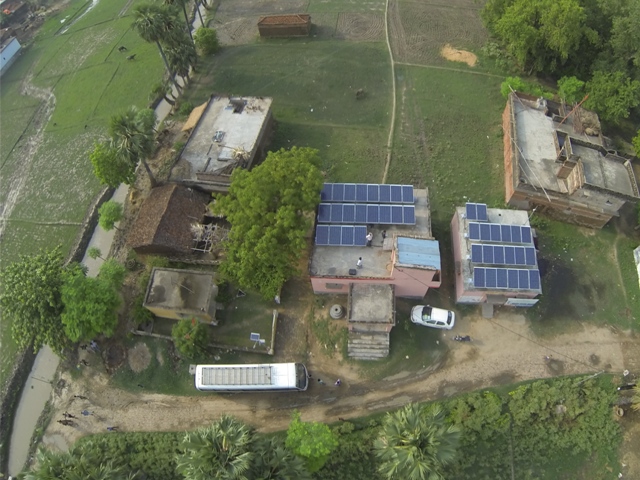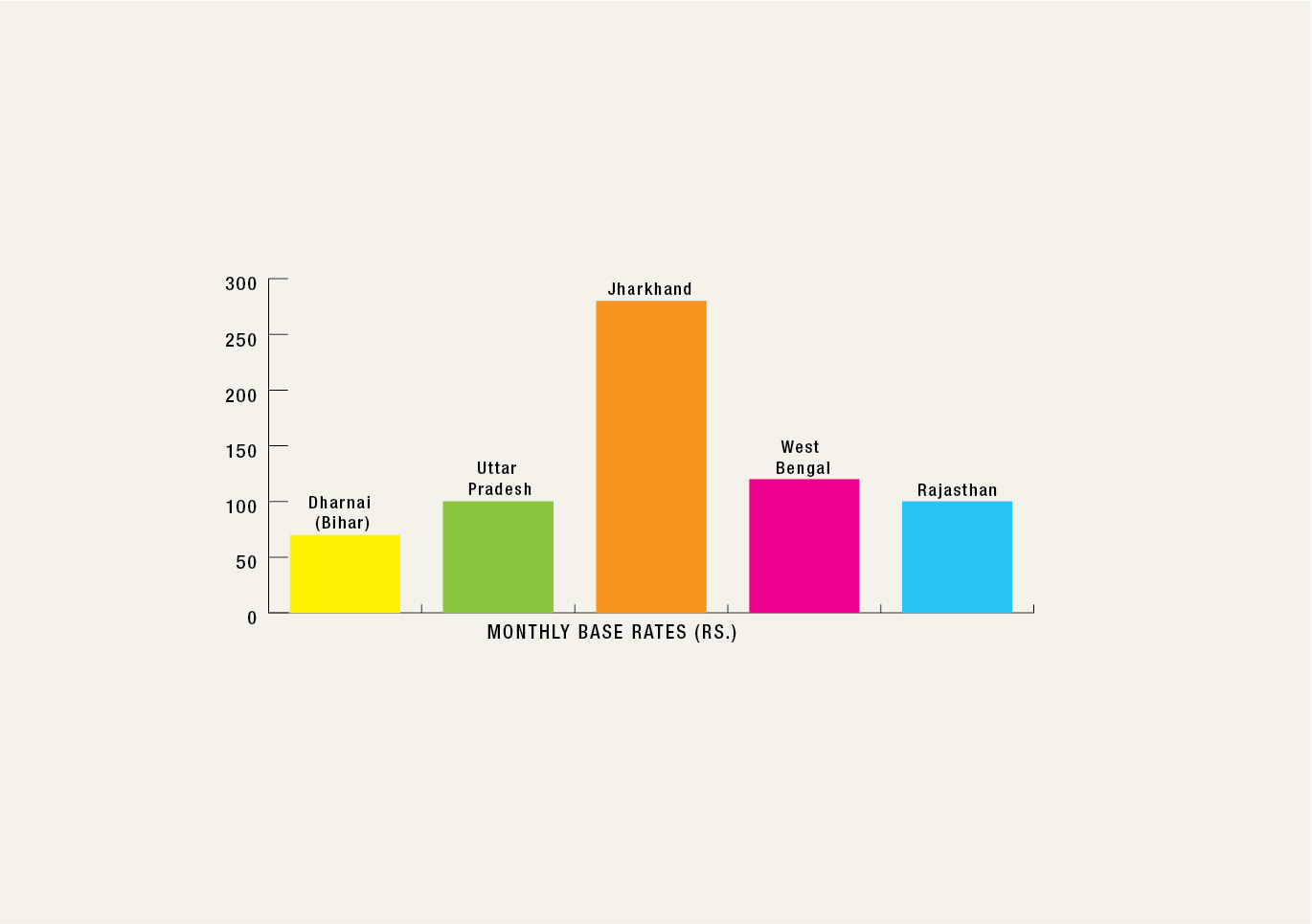
How Dharnai Can
Be The Solution
The story of the rise and fall of Bihar may seem unbelievable. Through the ages, the region was once the seat of power of mighty kingdoms, a source of intellectual thought, and leading industrial growth.
In the recent past, decades of corruption, lack of law and order and dwindling investment have allowed the state’s infrastructure to collapse. It’s not that the village of Dharnai in Makhdumdpur block of Jehanabad district in Bihar never had electricity. Until thirty years ago, the village had transformers and proper transmission lines providing access to electricity to every home.
Today one can see this past legacy in the form of a few remaining rusted poles and bits of metal junk that people did not manage to sell off for money. A few non-functional solar street lights still standing in the village that were installed by the government 4-5 years ago tell a different story — one of a public good that had no effective management system in place.
My journeys in search of solar technologies deployed in energy-starved India have taken me from Ladakh to Kerala and from Rajasthan to the Sundarban forests in West Bengal. I have seen all manner of business models and technologies. My most recent trip took me back to my own ancestral village of Jakkan, 100 kilometers west of Jodhpur in Rajasthan. There amidst the sand dunes, my relatives talked of how much easier their lives had gotten due to near-permanent electricity access having finally arrived at their doorsteps — a full 30 years after they had hoped and paid for it. Meanwhile, Lord Surya’s promise had managed to provide little bits of electricity through off-grid solar products in the form of solar home lighting systems and lanterns.
Discourses on energy access have coalesced around “incremental” and “genuine” energy access. The former supposedly delivered by smaller off-grid products and the latter through the promise of microgrids powered by a variety renewable energy technologies. It is assumed that microgrids provide the near complete level of energy security that a community can hope for in the absence of a reliable grid network — and depending on the size of the microgrid, this may be true.
Furthermore, grid-ready microgrids (those that could be plugged into a nearby centralized grid network at a future date) would allow for increases in supply of electricity as the demand of the community rises. Policies clarifying the long-term fate of microgrids as the government embarks on its national electrification mission could allow more entrepreneurs to enter the market for expanding energy access rather than simply leaving it to the already struggling public sector utilities.
Microgrids may also provide the kind of discipline a rural population requires to make payments for this vital resource. Getting people to pay for energy has been a challenge for all kinds of micro-energy entrepreneurs. Decades of political interference in electricity tariffs have led people to believe that free electricity is a right. A nation struggling to provide electricity access with limited fossil fuel resources and a mounting bill for energy imports and subsidies can hardly afford to distribute this resource free of charge.
Through my travels I have learned that there is a real false sense of rural poverty. Barring the absolutely destitute, people can (and must) pay for energy resources of all sorts. My door-to-door surveys in the states of Bihar, Uttar Pradesh and West Bengal alone, have revealed that people are paying between Rs. 10,000- 30,000 cash for solar home lighting systems. I challenge those that wish to talk in circles about the lack of financing as the main barrier to expanding energy access (certainly not true in a uniform manner across India’s 29 states).
It is with these factors and understanding that I evaluate the Dharnai solar microgrid project in Bihar. Firstly, the Dharnai microgrid is “grid-ready,” meaning it will be capable of connecting to a central or regional grid network should the need arise. This is important because it ensures that the money spent to install this technology will not be lost.
Secondly, a 20-member Village Electrification Committee (VEC) that is responsible for deciding tariffs, and management of the entire system, governs the Dharnai project. The VEC has 5 seats reserved for women and is representative of people from various castes. I came to learn that of the 68 Dalit households in the project site, 40 had taken a electricity connection from the microgrid — a sign that the system was benefiting even the most marginalised.
Thirdly, a feasibility survey conducted before the installation of the grid that mapped the willingness of people to pay for various levels of electricity provided through the system revealed that respondents in the below poverty line (BPL) category were willing to pay Rs 200 or less a month for the service while others were willing to pay up to Rs 500 a month.
The chart below reveals that the base-tariff ultimately decided by the VEC is far lower than this capability and less than what other microgrid providers in the north-Indian belt are charging (see Figure 1)

The tariff of the second package (with increased supply) has been set at Rs. 140/month. All of these rates across providers are roughly for the same number of hours (6-8) and all of them provide connection for mobile phones with some like the Dharnai project providing plug points rather than mobile charging leads that prevent any other appliance from drawing power from the system.
Thus far, it is clear to see that for the 3000 people (268 households) of Dharnai the 100 kW system is sufficient to meet their energy needs. People are able to get ample electricity, powering everything from lights to televisions, and some even powering other appliances like coolers, refrigerators, and irons.
At the time of my visit to the project site, energy meters with some sort of load-limiting capability, required for the effective management of the system, were yet to arrive. Time will tell whether the VEC is able to manage the system effectively and whether the villagers will cooperate with the pricing they themselves decided upon once the meters have been put in place.
If the government is to consider whether to spend on extending the national grid or creating frameworks for facilitating partnerships that see the speedy establishment of grid-ready microgrids, Dharnai may be a good example.
Beyond the one-time capital injection, the system must be able to pay for its own management and maintenance. Security and theft of both technology as well as power are problems even microgrids can face. For now, it seems the community has too much pride in their new public good and mutually enforced pressure to allow the system to fall into disrepair. For now, it seems Surya’s promise has delivered.
(Kartikeya Singh is a Doctoral Research Fellow at the Center for International Environment & Resource Policy at the Fletcher School of Law & Diplomacy at Tufts University. His Ph.D. thesis focuses on the firm-level characteristics that affect the scaling-up (or not) of decentralized solar technologies in India.)